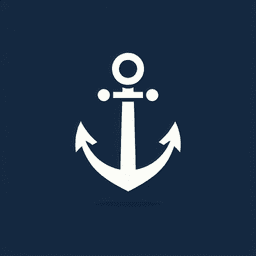
Anchor: Definition, Uses, and Examples
January 17, 2025
Anchor
An anchor is a critical piece of equipment used in maritime activities to secure a vessel to the bed of a body of water, preventing it from drifting due to wind or current. Anchors are essential for the safety and stability of ships, boats, and other watercraft when they are stationary.
There are various types of anchors, each designed for specific conditions and types of seabeds. Common types include:
- Fluke Anchor (Danforth): Known for its lightweight and high holding power, suitable for sandy or muddy bottoms.
- Plow Anchor (CQR): Effective in a variety of seabeds, including grass, sand, and mud, due to its plow-like shape.
- Claw Anchor (Bruce): Known for its ability to reset itself if the wind or current changes direction, making it reliable in rocky or coral environments.
- Mushroom Anchor: Typically used for moorings and permanent anchorages, ideal for soft seabeds.
Anchors work by embedding themselves into the seabed, using their weight and shape to resist the forces acting on the vessel. The effectiveness of an anchor depends on its design, the type of seabed, and the conditions of the water.
In addition to the anchor itself, the anchoring system includes the rode, which is the line or chain that connects the anchor to the vessel. The length and type of rode are crucial for ensuring the anchor holds effectively.
Proper anchoring techniques are vital for maritime safety, requiring knowledge of the local seabed conditions, weather forecasts, and the vessel's anchoring equipment. Mariners must also be aware of the "scope," which is the ratio of the length of the rode to the depth of the water, as it affects the holding power of the anchor.
Understanding Anchors in Maritime Context
Anchors are essential tools in maritime operations, providing stability and security to vessels by preventing them from drifting due to wind or current. They are crucial for safe mooring and are used in various types of watercraft, from small boats to large ships.
Types of Anchors
There are several types of anchors, each designed for specific conditions and vessel types. Common types include:
- Fluke Anchors: Known for their lightweight and efficiency in sandy or muddy bottoms.
- Plow Anchors: Ideal for rocky or weedy seabeds, offering strong holding power.
- Mushroom Anchors: Used for permanent moorings, especially in soft seabeds.
How to Choose the Right Anchor
Choosing the right anchor depends on several factors, including the size of the vessel, the type of seabed, and the conditions of the water. It's important to consider the anchor's holding power and the ease of deployment and retrieval.
Maintaining Your Anchor
Regular maintenance of anchors is vital to ensure their effectiveness. This includes checking for rust, ensuring the anchor chain is in good condition, and verifying that the anchor is securely attached to the vessel.
Frequently Asked Questions
Here are some common questions maritime users might have about anchors:
- What is the best type of anchor for sandy bottoms? Fluke anchors are generally considered the best for sandy bottoms due to their design and holding power.
- How do I know if my anchor is holding? You can tell if an anchor is holding by observing the vessel's movement. If the vessel remains stationary despite wind or current, the anchor is likely holding well.
- Can anchors be used in all types of seabeds? While anchors can be used in various seabeds, their effectiveness depends on the type of anchor and the seabed conditions. It's crucial to choose the right anchor for the specific seabed.
- Where are the anchors on a ship? Ships typically carry anchors on both the port and starboard sides of the bow. These anchors are capable of holding the ship in place in most anchorage conditions.
- What are the five parts of an anchor? A typical anchor consists of five parts: the shank, the crown, the flukes, the tripping ring, and the stock. Each part plays a crucial role in the anchor's functionality.




